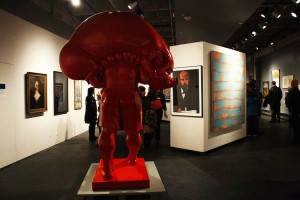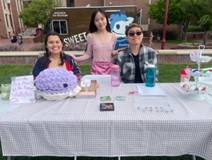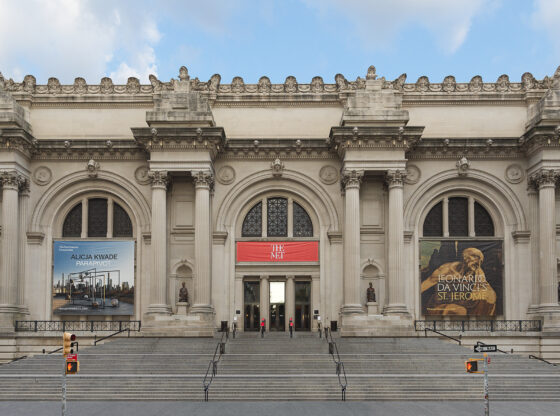Green: a color possessing connotations of envy, love, life, nature, greed, spring and wealth. In the context of a stoplight, green means “go,” but, in the context of skin color, green means sickness. Which is the correct way to see green? Every artist seeks to answer the color problem; it cannot be avoided because color is everywhere. Color’s omnipresent existence makes it easy to assume that it is global, “the key to a grand theory,” as Jeffrey Keith, DU professor and renowned painter, explains. But connotations surrounding color change among all races, societies, genders and ages.
“The more you learn about color, the less you know,” said Keith. “I’m a fabricator. I’m a maker. That’s my orientation. I was ready, and it was time for me to share what I have found to be true about color.”
Keith partnered with Dan Jacobs, Vicki Myhren Gallery director, to create the gallery’s newest exhibit: “Learning to See Color.” Jeffrey explains that the title of the exhibit poses a necessary paradox: it would be more accurately named “Learning to Perceive Color.” However, the goal that Keith and Jacobs have for viewers to take with them when they walk out of the exhibit is that a person cannot, in essence, “see” color; instead, color is all about perception, comprehension and the culture in which it is found.
This particular exhibit stands apart from the countless others that also attempt to deal with the intricacy of color: it puts the color questions in a historical and cultural context. The pieces displayed include a wide range of artists such as Andy Warhol, Norman Rockwell, Enrique Chagoya, Renée Cox and Sandy Skoglund, in addition to several older pieces by unknown artists. Artwork from the University Art Collection’s portfolio of color studies by Josef Albers can also be found garnishing the exhibit, bringing each unique piece to speak together about color theory.
Everyone on staff for the exhibit is either a current undergraduate, graduate student or a recent graduate—proving DU students’ capability to put on an uncomparable show. Many partnerships were also involved in the making of the show, including the Colorado Symphony Orchestra, the Newman Center for the Performing Arts, the Lamont School of Music and the Anchor Center for the Blind. Furthermore, on Feb. 26, from 10 a.m. to noon, a symposium will be held in the gallery in collaboration with the Clyfford Still Museum, accompanied by guest speakers to further expl ore this unanswerable color problem.
ore this unanswerable color problem.
The gallery is open from noon to 5 p.m. on Tuesdays through Sundays, and noon to 7 p.m. on Thursdays for extended hours. The Shwayder Art Building is on the north side of Asbury, right across from Sturm. “Learning to See Color” will be open through March 6, so you have plenty of time to experience this unique approach to the vast complexity of color, spoken through a variety of photographs, paintings, sculptures and more.











